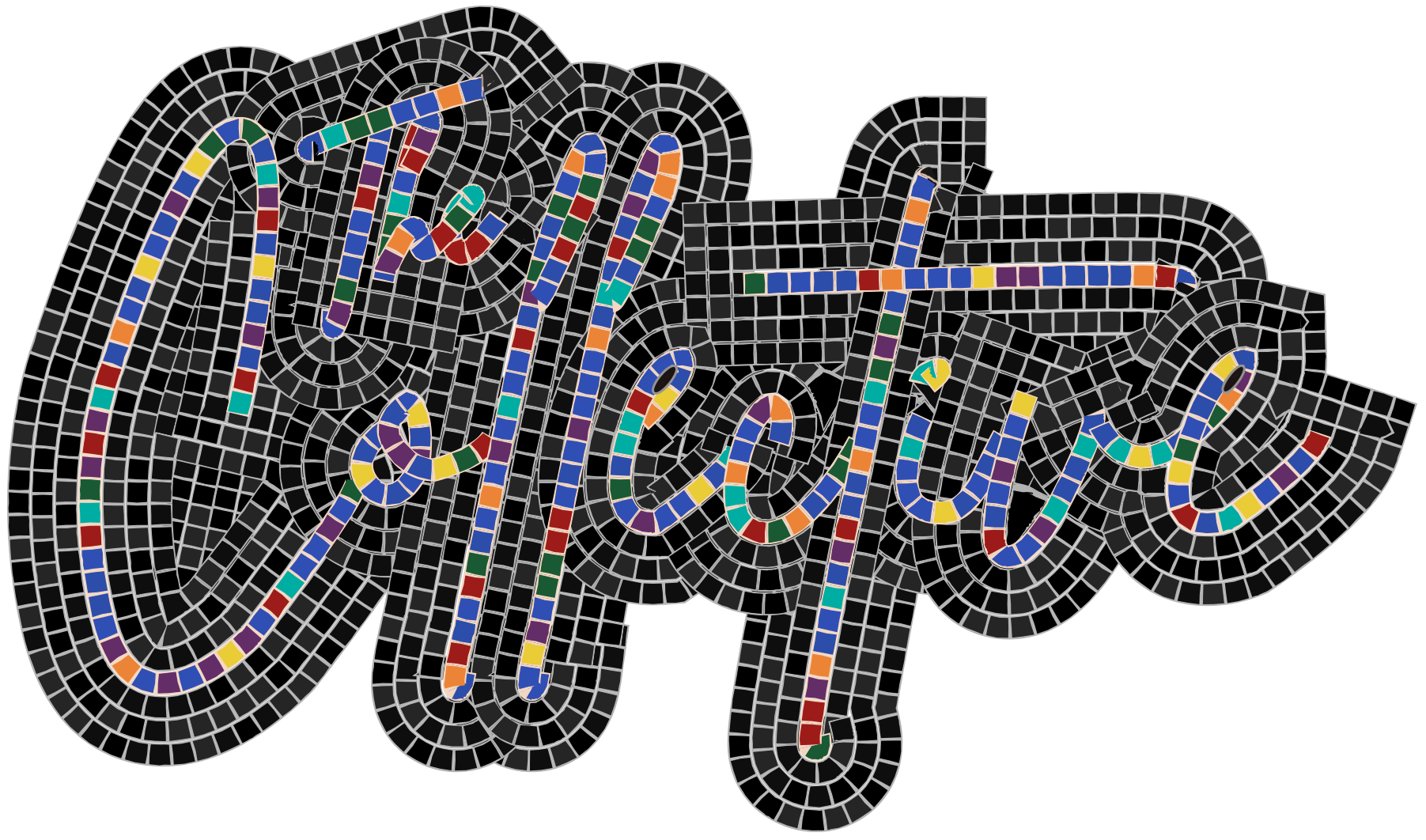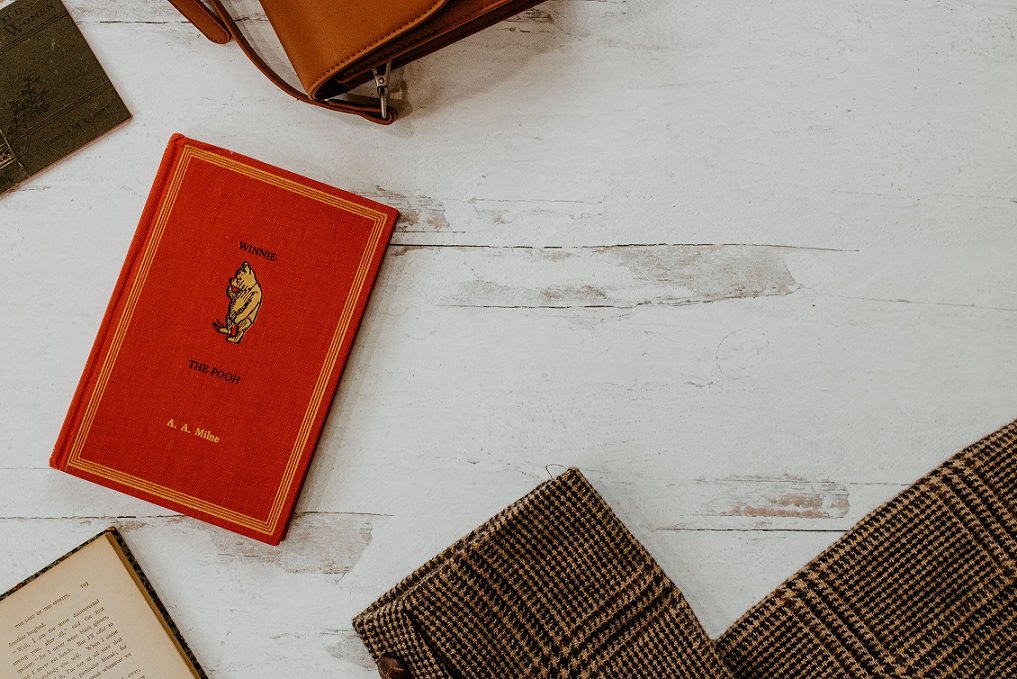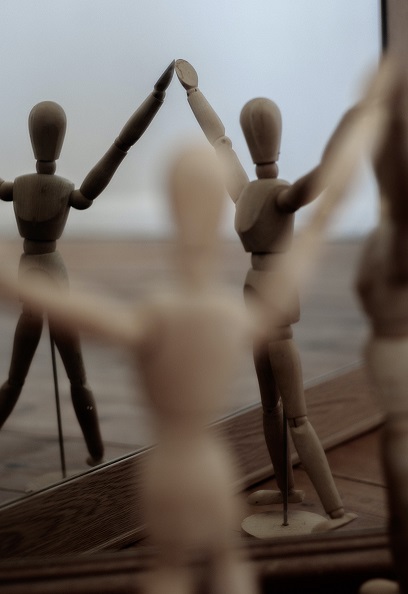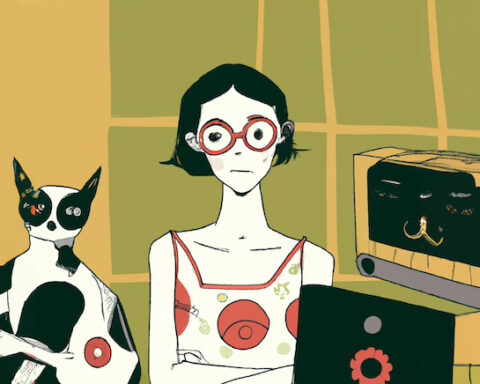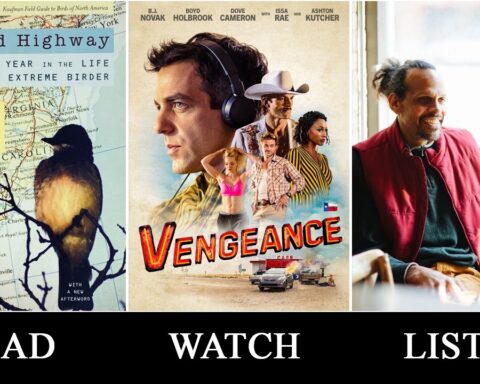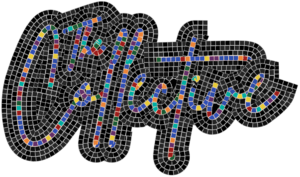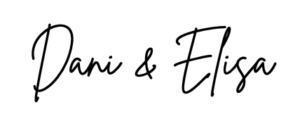“Here is Edward Bear, coming downstairs now, bump, bump, bump, on the back of his head, behind Christopher Robin. It is, as far as he knows, the only way of coming downstairs, but sometimes he feels that there really is another way, if only he could stop bumping for a moment and think of it.”
A.A. Milne, Winnie-the-Pooh
So, what is the Alexander Technique anyway? If you are, or have been, an injured performing artist, you probably already have a good idea of what it is, since physical pain is often the road that leads people to the technique. For those of you who have had limited exposure to it, Alexander Technique can be defined simply as a way of noticing our habits. This includes full-body habitual responses — we react with our physical, emotional, and mental selves, which the Alexander Technique does not separate because they all affect each other. Since most people come to the technique because of pain or other physical problems, AT is often categorized as only dealing with musculoskeletal issues (how we use our bones and muscles). While this is a great place to start, students of the technique very quickly realize that our physical habits have emotional and mental explanations. At the heart of the technique is “being aware,” noticing how we react to a stimulus, taking time to pause, considering how to react, and then moving or thinking with direction. In short, it’s about noticing how we do things and deciding if we want to continue in the same manner or learn a new path.
We can continue bumping our way down the stairs like Edward Bear, or we can pause and allow ourselves to imagine that a new way of moving and being might be possible.
In this article, I will visit three main concepts of the Alexander Technique: unreliable sensory appreciation, inhibition, and awareness. I will then demonstrate how these concepts can be applied to our music practices and lives more broadly. Musicians, more than most people, understand that how we use our bodies matters — that our psycho-physical habits have a broader reach beyond just “the proper way to do things.” Changing these habits foundationally alters the character and sound of our playing (how cool is that?!), and when we apply these same ideas to how we live, think, and communicate with others, we can fundamentally change who we are as people and how we react to and interact with those around us. We have not only the ability to create change in our own lives, but to even impact issues of social justice if we take time to notice how we react to others whose experiences differ from our own. In fact, we can all be more open-minded and thoughtful members of society if we can move beyond just bumping down the stairs in our lives.
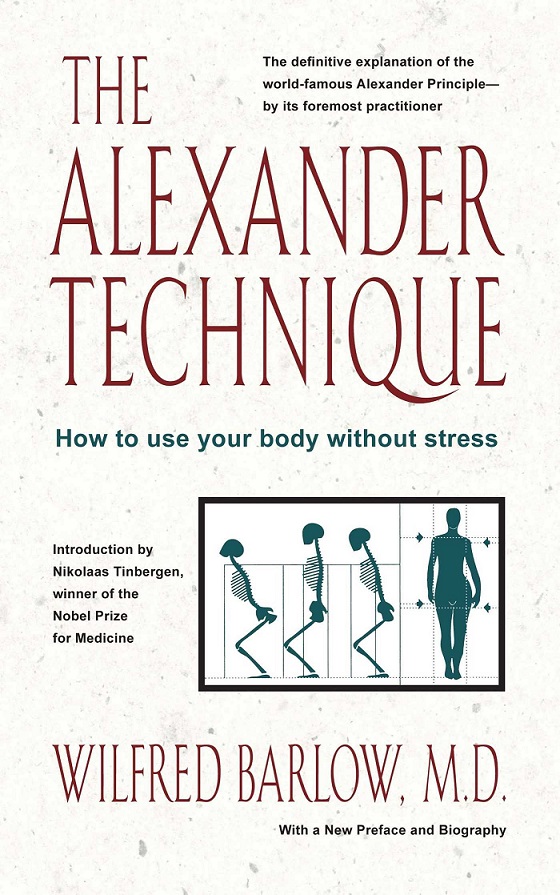
One of the first concepts I like to bring up with new students of the Alexander Technique is unreliable sensory appreciation. In the words of F.M. Alexander, “When people are wrong, the thing which is right is bound to be wrong to them.”[1] This is an important idea to be aware of in our musical practices whenever we approach an old habit, study with a new teacher, or take feedback from anyone, for example. The idea that something is a habit because it feels right, and not because it is right, is crucial for the learning process and for communicating with and listening to others. Most of us can relate to this through our teaching of new students who are hesitant to make a change; maybe we’ve even been that student ourselves! We cling to habits that are wrong because they feel cozy and familiar, like a good old slouch in a chair. It’s a bizarre physical comfort to be in our slouching habits even if we know that they’ll cause issues down the road.
Unreliable sensory appreciation lurks in many areas of our lives. The idea that something seems correct because it is familiar can apply to our senses, tastes, and worldviews of justice; how we view fashion, social norms, and other constructs may be “normal” to us because they feel comfortable. We can even apply unreliable sensory appreciation to how we hear music. Music that is not familiar can seem scary or irrelevant to others — think of the audience’s riotous reception of the first performance of Stravinsky’s Rite of Spring in Paris! Many of us are often fearful of the unknown, of what is not a part of our immediate reality. In my youth, with my limited concept of what music even is, I remember thinking that multiphonic singing was “evil,” when really it was just different to my ears. The unknown made it scary. I was unable to understand and appreciate its beauty until I was exposed to this type of music and its context in a music appreciation class. I was able to view and hear it beyond my immediate reality and take in a broader worldview.
On a much larger-scale, and in a more critical sense, this idea of unreliable sensory appreciation can apply to issues of social justice by helping us understand how other people experience their realities. By positioning ourselves within the belief that we are 100% correct, we close ourselves off from the possibility of positive change; but, what is familiar and comfortable may not be correct — it may just be a habit. Now more than ever, with current political divisions and issues with race in our country and the broader world, we need to be open to new ideas and ways of being. This can be a hard concept to accept, and it may be scary to let go of long-held beliefs, worldviews, and muscle patterns. But ultimately, when we are aware that we might not be “correct,” we become more open to learning — physically, emotionally, mentally — and that opens the way to first understanding and then repairing the injustices in others’ realities.
We pre-judge so much in our lives based on familiarity. The next time you find yourself slouching, rashly judging something or someone, or responding to a situation in an unwanted way, don’t be hard on yourself. Pause. Be excited that you noticed this response. Remind yourself that your senses are not necessarily accurate, just that they are familiar, and decide if you want to change the reaction. Then, find the space for change. Create space in your body and mind to welcome in a new reality.

This moment of intentional pause and space-making is referred to in the Alexander Technique as inhibition. F.M. Alexander calls this “the individual’s ability to wait before reacting to a stimulus.”[2] It is an extremely valuable moment if we remember to take the time to do it. We typically use it for noticing bodily habits, like jutting the head forward toward the music stand or down toward our cell phones, but it can apply to any reaction we have. We can take a moment to pause before responding to a loved one about an issue on which we don’t see eye to eye, to pause and decide how we want to work on a difficult passage of music, or to pause before speaking to a student or colleague. Rather than defaulting mindlessly to our triggered response, that little moment offers us a wide variety of mental and behavioral choices.
We cannot change any habit if we do not have awareness. Taking time to be aware of how we do things, how we react to stimuli, and how we listen is an important first step, and this extends to being aware of others and their experiences. If we work with these three concepts in harmony, we will be more open to understanding or accepting something that is not our reality. The new information we receive from being aware allows us to move with direction — to come out of our engrained physical patterns, change our mindsets, and alter our perceptions. Some habits are so strong and some responses so easily triggered that we may spend a lifetime noticing and undoing. Because of this, we need to offer ourselves and others grace in the long journey. It is easy to get annoyed when the same mistake or habit keeps repeating, when we find ourselves back in our old ways despite our hopes of responding differently. But if we understand that we are all in the process of undoing, and that change absolutely takes time, it is easier to be kind.
It is in that moment of awareness that we can change.
By allowing ourselves to live in the awkward space between “normal” and “new,” and to be vulnerable to possible change, we allow space for growth. Performing artists are particularly well-suited for this because of their creativity — when we allow for that awkward space to exist, this ushers in possibilities for more voices to be heard, for old barriers to be pushed or broken down, and for new boundaries to be created. As long as we have awareness, we won’t be stagnant in our learning and unlearning of habits. When we are stagnant, we don’t create room to become our best selves. When we are aware, we are always already changing, already reacting to what we want to do. That allows us to move forward, even if the change we make is only minimal. A basic physical example of this: if someone has scoliosis and notices that they are shifting more to one side or sitting into one hip, there is an automatic adjustment and a small change made in that moment of noticing. Before we think to move and actively alter our habit, we have already done something. We have reacted. Sometimes that moment is enough.
The point is in being aware that we have already changed. And those small personal changes, in altering our physiological makeup and the way we choose to relate to others, have the potential to spin out into larger and more meaningful changes.
In this process of noticing and changing habits, we may start to wonder why we do what we do and how we’ve learned to be. Frequently our habits stem from imitation. We imitate physical habits of our family, like the swagger of a walk or standing in one hip, or we may copy the musical phrasing or physical gestures of a famous and beloved performer. We may also mimic the language and even the thinking patterns of the people who surround us. Noticing where we pick up habits is a fascinating process of discovery and necessary for moving society forward. Imitation can be conscious or unconscious, positive, negative, or neutral; it can result from a very clear-cut decision or be an unconscious byproduct of our surroundings. We are “taught” through environmental and cultural imitation how to act, react, and behave. We mirror the society around us. Coming to terms with this is powerful. While mirroring our surroundings can be a wonderful thing, it can also cause us to pick up ideas that are not founded in truth and to put people and ideas into boxes that are inaccurate and maybe even hateful or prejudiced. If we consistently hear a negative prejudice against a group of people, we start to believe it. This is a form of unreliable sensory awareness.
Knowing we pick up habits unconsciously from the community surrounding us is a call for diversity. Diversity in thought, experiences, teaching styles, opinions, and ways of seeing and being in the world is crucial for understanding others and for making the world a more fascinating, beautiful place to learn and explore; ultimately, it allows us to be more empathetic and compassionate. For musicians, exposure to diversity of music and sound allows our ears to be more open. If I had grown up in a different environment, I probably wouldn’t have deemed throat singing evil — maybe I would have thought of four-part acapella hymn singing as strange instead. With the understanding that we imitate those around us, we should make it a priority to surround ourselves with kind, loving people from a variety of backgrounds in order to create the habit of loving kindness within ourselves and our communities. From there, we can make a habit of listening to a diversity of voices.
We experience the world through our body and because of our body. We each have different experiences in the same situation due to how we move, act, interpret, and appear. We even judge people at first glance based on their stance and body language. Knowing that we all have different experiences, and understanding that two people can exist differently in the same situation, we can learn to value and validate others’ experiences. In the field of music, we can apply somatic experiences to validate other interpretations, even if they are not what we are expecting or accustomed to hearing. For example, BIPOC may bring a different voice to their music because of their cultural heritage or what they have experienced through systemic racism; women bring a different story to their art based on how they have been perceived by others and taught to be as women in society.
Knowing we may be wrong (unreliable sensory appreciation), taking time to be aware, and pausing (inhibiting) before we decide how to react is liberating. Allowing ourselves this mindset can free our judgment of ourselves and others. Through this mindful way of being, we can listen with grace. We can be open to more ideas and, thus, more individual voices and ideas can be heard. When this happens, individuals are validated, people feel respected, and meaningful collaboration can happen. From there, we have a chance at building more inclusive and creative education systems, more effective government bodies, and more representative and empathetic community organizations.
Circling back to the wise words from the world of Winnie the Pooh, we have the ability – the choice, even – to stop bouncing down the stairs on our neck. We have the ability to live our lives better and to better the lives of others – we just need to stop and think about how to do it.

[1] Alexander, F.M. ‘Teaching Aphorisms’ (1930s) in Articles and Lectures. London, Mouritz, 1995.
[2] ——Constructive Conscious Control of the Individual. STAT books, 1997.
